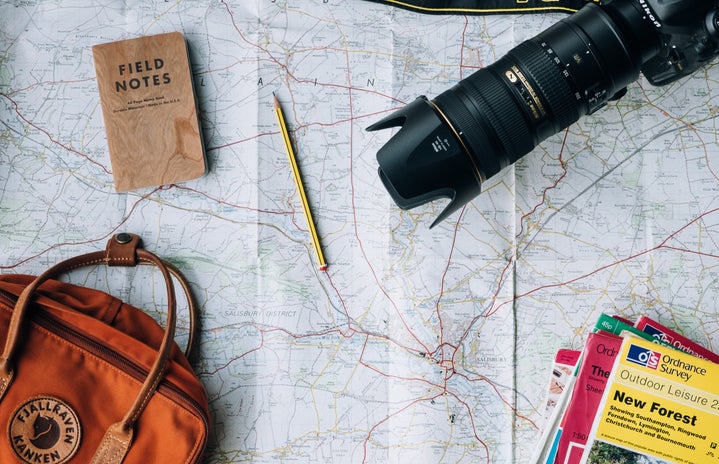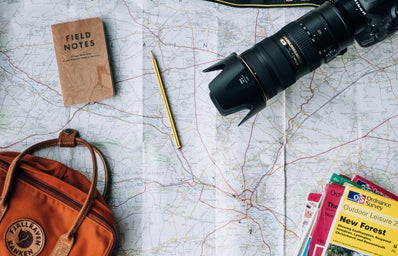Palestine has been facing heavy bombing from Israel for over a month, as well as a lack of access to food, water, medical aid, and fuel. What prompted this particular wave of unpaused violence was an attack by Hamas at an Israeli music festival that killed 1200 people.
For many of us, these events may have seemed to come out of the blue or to emerge out of an ancient issue too complex for us to untangle. Put simply, however, Palestinians have been under occupation by Israel for 75 years, and have been under blockade since 2007. Their struggles against their occupiers are unfortunately not new.
Social media has been shedding light on recent conditions in the Gaza Strip, thanks to journalists who are committed to sharing their experiences and those of others.
Bisan Owda is a filmmaker in her mid-20s who has continued to produce content throughout the escalating crisis. Since October 7th she has been documenting her experience, including her multiple displacements. Many of her videos start with her saying, “I’m Bisan from Gaza and I’m still alive,” acknowledging the people who check her account every day for updates, and the threats that she faces daily. She has given details about how many people have evacuated, how many people have been killed, and how people are using limited access to electricity to charge electronics. She has detailed the difficulties caused by a lack of Internet, electricity, and cellular connection.
On October 13th, Owda recorded her nightly routine of packing her belongings and leaving shoes by the door to be prepared to evacuate quickly if needed, and going to bed early due to the bombing intensifying during the night. Recently she made a video describing difficulties accessing bathrooms and showing the devastatingly long lines. Newer videos also capture her journey to the south of the Gaza Strip, after being displaced for the fifth time, and highlighting that people are still being injured and killed in this supposedly safer area.
Plestia Alaqad, 21, graduated in 2022, receiving a degree in New Media and Journalism. One of her earliest videos covering her experience, on October 9th, shows the escalation of her situation throughout a single day – from waking up to a damaged window due to a nearby bombing and evacuating by nighttime due to the danger. In an interview the next day, she clarified that October 7th was not the start of tensions between Israel and Palestine, noting that Palestine had been under blockade long before Hamas’ attack. The same day, she posted a video walking through a decimated neighborhood. In another post, she reflects on a sentiment that she had already had during aggressions before 2023: “Only in Gaza .. a genocide happens and the world doesn’t care .. doesn’t do anything.” Later, she began posting her diary entries, where she wrote of her struggles.
Many of Alaqad’s videos feature children, some who give her tea and food, others hugs. On November 8th she posted a video of a woman who had evacuated and taken her pets with her. She named a turtle that Plestia is holding after her, and the photo is captioned “Meet Plestia the 🐢”. In addition to creating this content and navigating the current situation, her Instagram account was hacked, with the hackers posing as her asking for donations. She has since regained access to her account and clarified that she is not asking for donations, continuing to share her experiences.
Motaz Azaiza is a photographer in his mid-20s. He graduated from Al-Azhar University, which was destroyed by Israeli bombing in the past weeks. Between October 6th and October 7th, a brutal shift occurred in his Instagram feed, as he pivoted from capturing the beauty of Gaza and other locations to covering the assault. On October 8th, he visited a refugee camp with his camera and gave children the chance to play with it to lift their spirits. A video the next day starts with the camera pointed at the floor as deafening bombings take place nearby, the explosions lighting up the dirt in front of the photographer. Some of his photos and videos capture Gazans sitting on top of building remains, alone. In a few of them, he is the focus of the photograph, sitting atop the rubble in his press vest and hard hat.
As the number of evacuees increased, Azaiza began filming the families traveling on foot, in vehicles, and with animals on their way to the South, including a mother dragging her children behind her in carriers. Along with his photos and videos, he captures many moments in his Instagram stories; in some, entering destroyed buildings as people dig through the rubble to retrieve the inhabitants. On November 5th, with Plestia, he posted a video listing all of the places that are being bombed and demanding a ceasefire.
These journalists have since evacuated from Gaza City due to the bombing, but their content has also shown that no location in the Gaza Strip is truly safe. Among ever-worsening crises surrounding lack of food, water, medical supplies, and fuel, creators have also begun sharing instances of rain, as winter approaches, introducing new threats.


